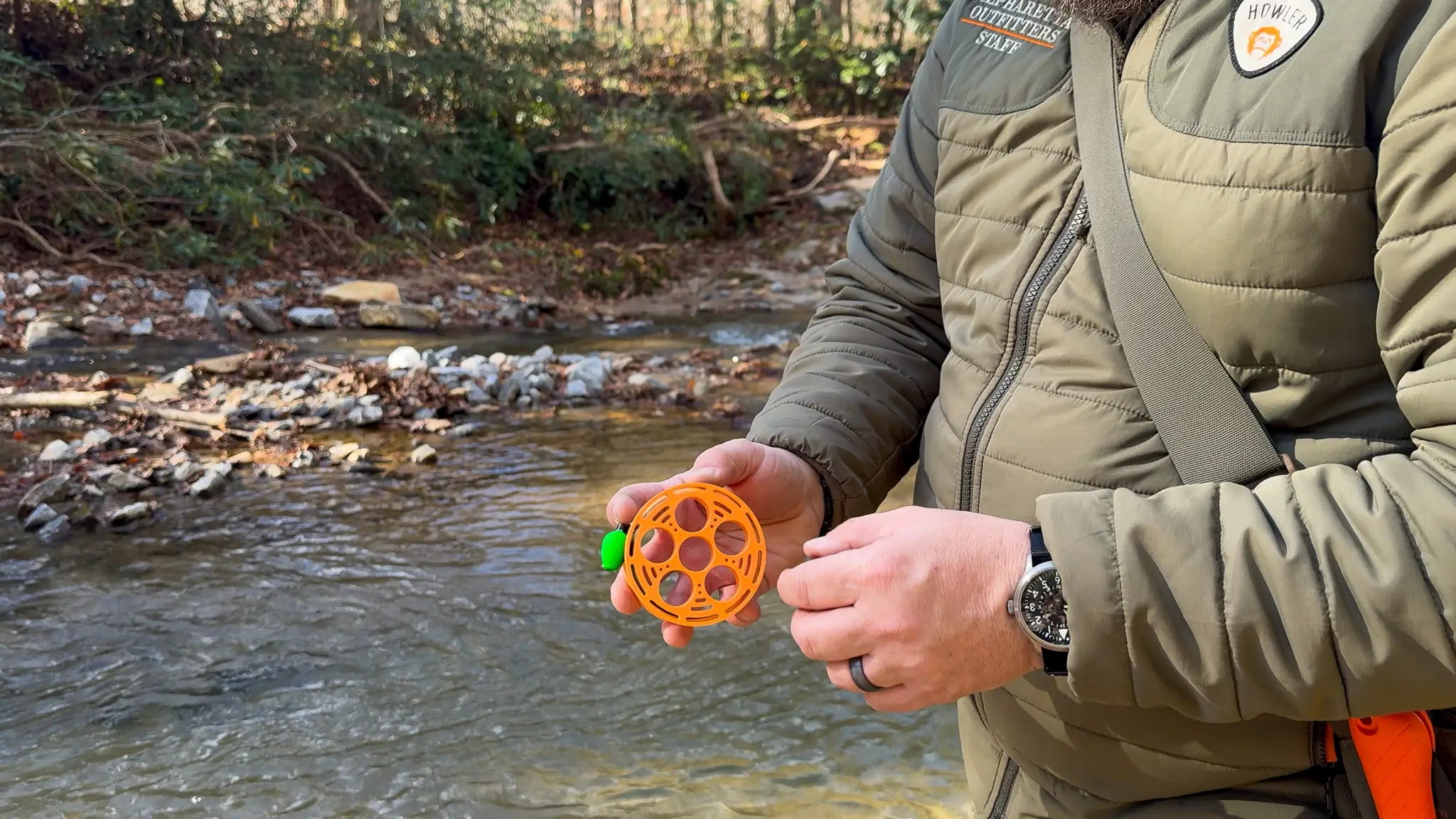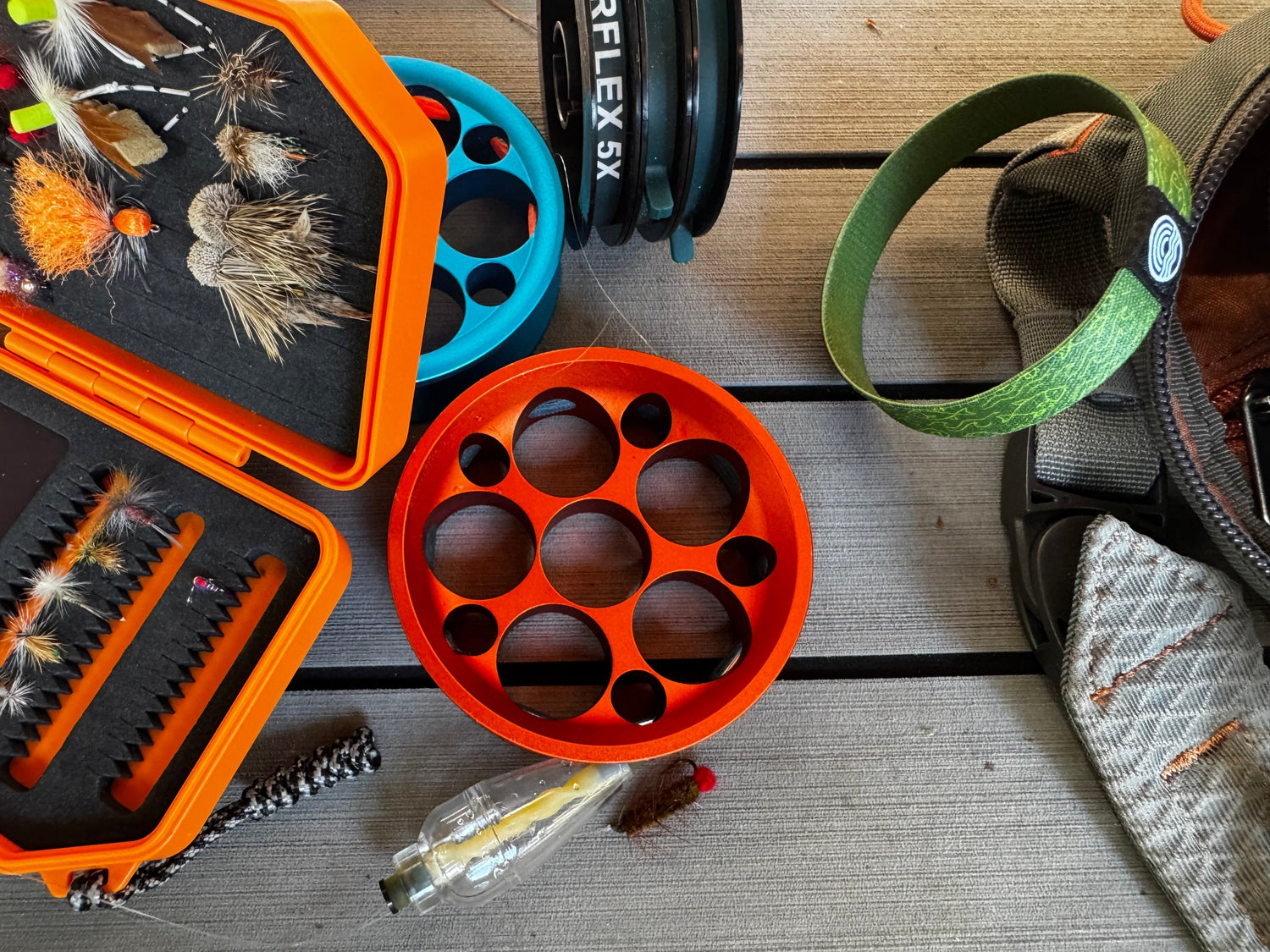Hand reel fishing is fishing distilled to its core—no rods, no moving parts, no high-maintenance gear. It’s about you, the line, and the water. At first glance, its simplicity might seem limiting, but hand reel fishing is as versatile and powerful as it is minimalistic.
Ready to sharpen your skills and level up your game? Dive into these advanced techniques to turn basic hand reel fishing into an art form.
Precision Casting: The Science of Perfect Placement
Hand reel fishing demands precision. Without the mechanics of a rod to assist, your cast relies entirely on technique, making accuracy and distance critical. A poorly placed cast can scare off fish or miss the target zone entirely.
Tips for Next-Level Casting:
- Aim with Intent: Picture your cast like throwing a dart. A high arc is excellent for clearing overhanging branches, while a flatter trajectory works better for distance or cutting through wind.
- Master the Loop: Before casting, loop a controlled length of extra line in your hand. Releasing the loop as you throw adds momentum, increasing both range and accuracy.
- Adapt to Conditions: On windy days, adjust your cast. Use sidearm throws to maintain control and work with the wind to extend your reach instead of fighting it.
Pro Tip: Practice in an open field to fine-tune your technique. Aim for a specific target, like a bucket, to improve your precision.
Key Takeaway: The better you place your bait, the better your chances of a bite. It’s not just about casting farther—it’s about casting smarter.
Example: Spot a trout hiding under a rocky ledge? Use a gentle, high-arc cast to drop your bait softly into the water without spooking it.
Controlling Drag: Mastering Line Tension
In hand reel fishing, your fingers are the drag system. Controlling tension is critical for battling strong fish, keeping your line secure, and avoiding snap-offs. A fine balance between letting the fish run and maintaining control can mean the difference between a trophy catch and a heartbreaking escape.
How to Control Drag with Your Hand:

- Positioning Matters: Keep your index finger in the reel’s center hole for stability.
- Pinch the Rim: Use your thumb and middle finger to pinch the outer rim of the reel. This position gives you full control over how quickly the line releases.
- Adjust Pressure: Tighten your pinch to slow the line and ease it to let the fish run when necessary.
Advanced Technique: Switch between light and heavy pressure as the fish tires. This method ensures you don’t break your line while wearing the fish down gradually.
Key Takeaway: Drag control isn’t just about line tension—it’s about finesse. Handle the fight, don’t let the fish handle you.
Example: Hook a tenacious bass in a swift current? Pinch the rim tightly to prevent the fish from darting too far, then release pressure slightly to let it tire itself out.
Adapting to Water Depths: Fishing Every Layer
Fish are opportunistic feeders, but they aren’t always hanging out in plain sight. Temperature, light, and oxygen levels dictate their movement within the water column. To catch more fish, you’ll need to explore all depths.
Depth Fishing Techniques:
- Surface Bites: On calm mornings or evenings, fish are often near the surface. Use floating bait or unweighted rigs for a natural presentation.
- Mid-Water Action: Add a split shot weight 12-18 inches above your hook to target mid-level feeders like bass or walleye.
- Bottom Dwellers: Heavier rigs are your best bet for fish like catfish or flounder. Let your bait settle and stay patient—they’re usually more cautious.
Pro Tip: Use visual cues like jumping fish or swirling water to determine the most active feeding zone. Adjust your rig accordingly.
Key Takeaway: Successful fishing means meeting the fish where they are—not waiting for them to come to you.
Example: River fishing on a hot afternoon? Drop your bait to deeper pools where fish retreat to cooler, oxygen-rich water.
Advanced Line Management: Staying Tangle-Free
Line management might not seem glamorous, but it’s a cornerstone of efficient hand reel fishing. A tangled line isn’t just frustrating—it wastes precious time and can cost you a big catch.
Secrets to Perfect Line Management:
- Maintain Tension: Always keep a slight pull on your line, even when retrieving. Slack leads to knots and tangles.
- Wrap Evenly: As you wind your line back onto the reel, ensure it’s distributed evenly. Uneven wrapping invites chaos on your next cast.
- Inspect Regularly: After every cast or retrieval, check your line for kinks, twists, or frayed sections. Early detection prevents headaches later.
Pro Tip: In windy conditions or while using long setups, spool the line snugly and keep a consistent tension as you reel it in.
Key Takeaway: A smooth, untangled line means you’re always ready for the next cast. Time spent fixing knots is time you could spend catching fish.
Example: Casting in a rocky stream? Keep your line taut and tidy to avoid snags and tangles when navigating obstacles.
Fishing by Species: Tailoring Your Approach
Fish have unique behaviors and feeding patterns. Understanding their preferences can dramatically improve your success rate.
Best Practices for Common Species:
- Trout: Drift lightweight bait naturally with the current for a subtle, irresistible presentation.
- Bass: Use lures or spinners retrieved slowly near structures like weed beds or submerged logs.
- Catfish: Drop heavily weighted rigs to the bottom with stink bait or chicken liver—catfish rely on their sense of smell more than sight.
Pro Tip: Research your target species before heading out. Knowing their habits will save you time and frustration.
Key Takeaway: There’s no one-size-fits-all approach in fishing. Match your gear and technique to the species for maximum success.
Example: Going after bass in a clear lake? Use a spinnerbait and reel slowly to mimic an injured minnow.
Fishing Tough Conditions: Adapt and Conquer
Wind, rain, and challenging terrain are no match for an angler who knows how to adapt. Overcoming these obstacles often leads to the most rewarding catches.
Strategies for Success:
- Wind: Use sidearm casts to maintain accuracy. Heavier rigs help keep your line stable in gusty conditions.
- Fast Currents: Cast upstream and let the bait drift naturally into pools or eddies where fish like to rest.
- Obstacle Course: For rocky or cluttered waters, shorten your line for better control and use precise, targeted casts.
Pro Tip: Pack multiple rigs so you can adjust quickly to changing conditions without missing opportunities.
Key Takeaway: Flexibility is your best tool. The more you adapt, the more you’ll catch—rain or shine.
Example: Wind picking up on the lake? Switch to a weighted rig and sidearm cast to keep your bait on target.
DIY Rigs and Hacks: Custom Gear for Big Wins
Hand reel fishing invites creativity. By building your own rigs and experimenting with bait, you can customize your approach and outfish the competition.
Handline Hacks Worth Trying:
- Glow Beads: Perfect for night fishing, these attract nocturnal predators like walleye or catfish.
- Flavored Baits: Coat your bait with garlic oil or anise to add an irresistible scent.
- Pre-Tied Leaders: Keep a selection of pre-tied rigs ready to go for quick swaps and fewer interruptions.
Pro Tip: Always carry a small tackle box with essentials like hooks, split shots, and swivels for on-the-fly adjustments.
Key Takeaway: The most effective setups are often the ones you create yourself. Don’t be afraid to experiment.
Example: Fishing a tidal flat? Add reflective tape to your rig for extra visibility in murky water.
Feel the Fight: Perfecting Your Retrieval
Retrieval is where the magic happens. The way you bring in your line mimics prey movement and can trigger predatory strikes.
Retrieval Styles to Master:
- Stop-and-Go: Reel in short bursts with pauses in between. This simulates an injured fish and entices predators to strike.
- Slow and Steady: Perfect for cautious feeders like bass, this retrieval mimics a slow-moving target.
- Vertical Jigging: Ideal for bottom feeders, lift and drop your bait rhythmically to attract attention.
Pro Tip: Pay attention to the fish’s behavior. If they’re not biting, switch up your retrieval until you find what works.
Key Takeaway: A varied retrieval keeps fish interested and increases your chances of a strike.
Example: Fishing for walleye at dusk? A slow, erratic stop-and-go retrieval often seals the deal.
Why Hand Reel Fishing is the Future
Hand reel fishing is more than a minimalist trend—it’s a durable, adaptable, and thrilling way to fish anywhere. From targeting trout in mountain streams to bass in deep lakes or saltwater species in the surf, its versatility and simplicity are unmatched.
Gear up with the GoReel Hand Reel Fishing Kit and discover why sometimes, less really is more.





